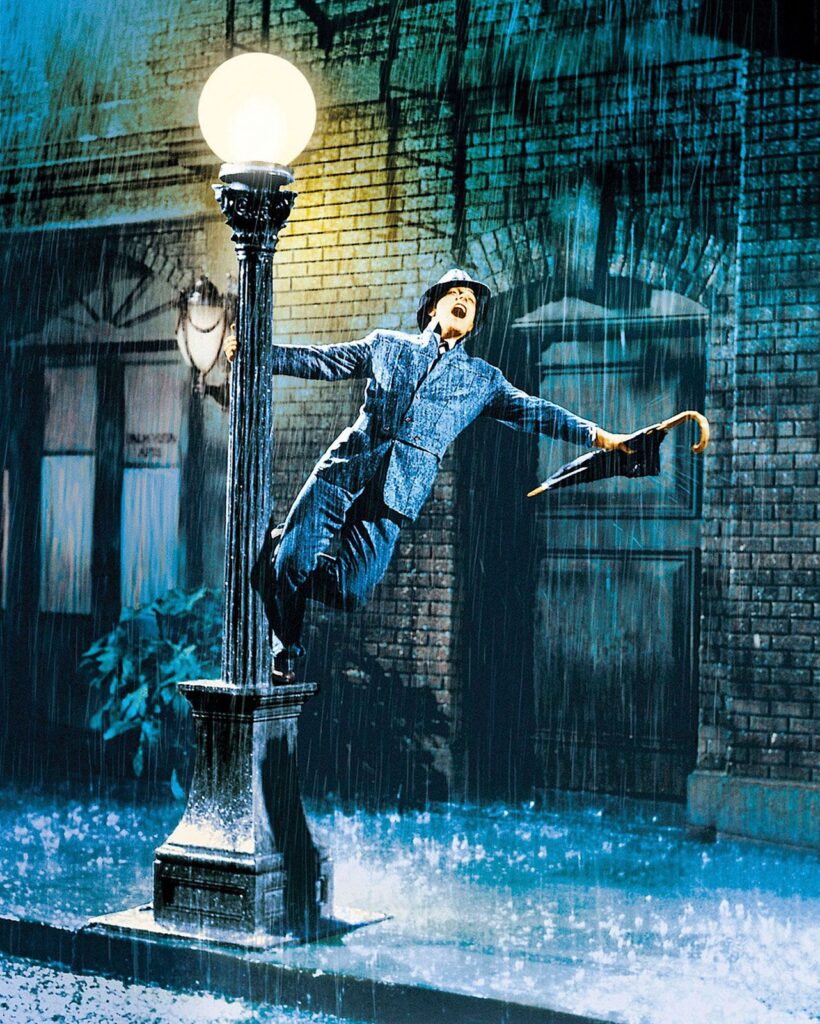“Singin’ in the Rain,” a timeless classic with lyrics by Arthur Freed and music by Nacio Herb Brown, is much more than a popular song—it’s a cultural phenomenon. First introduced by Doris Eaton Travis on Broadway in The Hollywood Music Box Revue of 1929, the song quickly rose to fame, becoming a massive hit thanks to Cliff Edwards and the Brox Sisters’ performance in The Hollywood Revue of 1929. Its widespread popularity in that same year saw multiple chart-topping versions, including those by Edwards, Earl Burtnett, and Gus Arnheim.
What sets “Singin’ in the Rain” apart, however, is its enduring legacy and its impression on the performing arts. Its infectious melody, uplifting lyrics, and universal themes have inspired countless artists over generations. This article explores how “Singin’ in the Rain” became a cornerstone of artistic expression and development for aspiring performers, musicians, and dancers.
The Timeless Appeal of “Singin’ in the Rain”
At its heart, “Singin’ in the Rain” is a song about joy and resilience. Its simple yet evocative lyrics capture the essence of finding happiness even in challenging circumstances. Lines like “What a glorious feeling, I’m happy again” remind listeners of the power of optimism and self-expression, concepts that resonate universally. The melody, written by Nacio Herb Brown, enhances the song’s accessibility, making it as relevant today as it was nearly a century ago.
For aspiring artists, the song’s relatability is key to its role as an inspirational piece. The emotional universality of its message has made it a frequent choice for auditions, showcases, and training exercises across artistic disciplines.
The Broadway and Hollywood Connection
From its origins on Broadway to its incorporation into cinematic history, “Singin’ in the Rain” has served as a bridge between theater and film. Doris Eaton Travis first introduced the song in The Hollywood Music Box Revue, where its upbeat tempo and engaging lyrics delighted audiences. Shortly thereafter, Cliff Edwards and the Brox Sisters catapulted it to cinematic fame in The Hollywood Revue of 1929.
The song’s enduring popularity paved the way for its inclusion in MGM’s 1952 film Singin’ in the Rain, where it reached new heights of cultural significance. Gene Kelly’s iconic performance—complete with an unforgettable dance sequence under pouring rain—became synonymous with creative freedom and artistic excellence. For dancers and choreographers, this performance is a masterclass in blending physicality, emotion, and storytelling.
A Model for Aspiring Vocalists
The technical demands of “Singin’ in the Rain” make it a favorite among vocal coaches and aspiring singers. While the melody is deceptively simple, the song requires precise control of phrasing, tone, and dynamics to fully convey its optimistic message. Cliff Edwards’ rendition, which dominated the charts for 12 weeks in 1929, remains a benchmark for aspiring vocalists.
Performers often choose this song to demonstrate their ability to balance technical skill with emotional resonance. The melody challenges singers to maintain a light and effortless delivery, even as the lyrics require heartfelt expression. These dual demands make it an invaluable piece for vocal training.
A Catalyst for Choreographic Exploration
Gene Kelly’s performance in the 1952 film adaptation revolutionized how “Singin’ in the Rain” was perceived. His choreography turned the song into a full-bodied expression of joy, merging tap, ballet, and modern dance styles into a cohesive routine. For dancers, this sequence represents the pinnacle of creative interpretation.
Aspiring dancers and choreographers draw inspiration from Kelly’s ability to tell a story through movement. His use of props, spatial awareness, and connection with the camera transformed a simple song into a visual masterpiece. Dance schools and theater programs often study this scene to explore how music and motion work together to create an unforgettable performance.
A Tool for Aspiring Musicians
For musicians, “Singin’ in the Rain” offers a wealth of opportunities to explore arrangement and interpretation. The song’s structure—built on a recurring melodic motif with room for improvisation—has allowed artists to adapt it to various styles over the decades. From big band orchestras to solo piano arrangements, the song has been reinterpreted in countless ways, providing a canvas for experimentation.
Jazz musicians, in particular, have embraced “Singin’ in the Rain” as a standard. Its chord progression and rhythmic flexibility make it an ideal piece for improvisation. Aspiring musicians often study the song to understand how to balance creative liberties with maintaining the integrity of a classic melody.
A Narrative of Resilience and Joy
Beyond its technical aspects, “Singin’ in the Rain” embodies themes that resonate deeply with aspiring artists: resilience, joy, and the transformative power of creativity. These themes are particularly relevant to those navigating the challenges of artistic development. The song reminds performers of the importance of perseverance and finding happiness in the creative process.
This message has made the song a popular choice for motivational performances. Many young artists connect with its optimism, using it as a source of encouragement during auditions or showcases. The enduring relevance of its lyrics continues to inspire new generations of performers to pursue their artistic dreams.
Modern Interpretations and Cultural Legacy
“Singin’ in the Rain” has not only remained a staple in its original form but has also been reinterpreted by contemporary artists. Each reinterpretation adds new layers of meaning, showcasing the song’s adaptability. Artists ranging from Frank Sinatra to Jamie Cullum have put their own spin on the classic, introducing it to new audiences.
These modern renditions ensure the song remains relevant in an ever-changing cultural landscape. For aspiring artists, they highlight the importance of adaptability and creative reinterpretation. By studying how different artists approach the same material, performers can gain valuable insights into making classic pieces their own.
An Educational and Inspirational Resource
The song’s enduring popularity has also made it a fixture in educational settings. Music and theater programs often incorporate “Singin’ in the Rain” into their curricula, using it as a case study for vocal performance, choreography, and musical arrangement. Its historical significance provides students with a deeper understanding of the evolution of popular music and entertainment.
Moreover, the song’s themes of joy and perseverance offer a valuable lesson for aspiring artists: creativity is as much about emotional expression as it is about technical skill. By engaging with “Singin’ in the Rain,” students learn to connect with their audience on a deeper level, a skill that is essential for any successful performer.
Impression
“Singin’ in the Rain” is more than just a song—it’s a cultural touchstone that continues to inspire and educate aspiring artists. From its Broadway debut to Gene Kelly’s cinematic masterpiece, the song has left an indelible mark on the worlds of music, theater, and dance. Its technical demands and universal themes make it an invaluable resource for performers seeking to hone their craft.
By engaging with “Singin’ in the Rain,” artists can explore the intersection of technical skill and emotional resonance, drawing inspiration from its timeless message of resilience and joy. As new generations continue to reinterpret this classic, its legacy as a beacon of artistic expression remains secure, ensuring its place as a cornerstone of creative development.
No comments yet.








